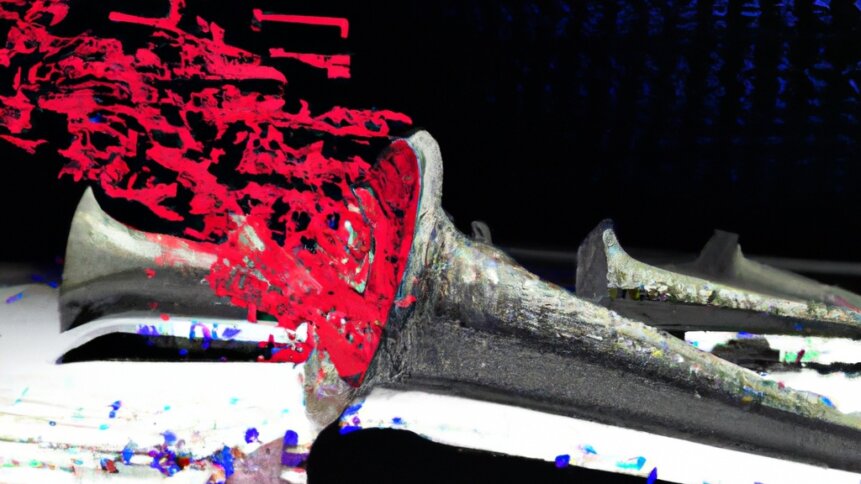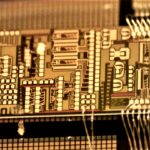Next instalment in 3D printing revolution

Looking at article headlines is a great way of charting the fortunes of 3D printing. The computer-driven additive manufacturing technique captured the imagination of many – based on the rising number of Google searches for 3D printing – beginning in 2012. And by 2015, the Harvard Business Review confidently announced that the 3D printing revolution was happening and will transform operations and strategy. However, by 2020 that initial excitement had dimmed, which prompted ITPro to ask the question, “Whatever happened to the 3D printing revolution?” But it didn’t take long for the prospects for custom manufacturing to bounce back. And just last year US Business magazine Forbes was considering 3D printing’s next revolution.
Art of sound
So what does the next instalment look like? Checking out research conducted recently at labs in Germany, the next instalment in the 3D printing revolution may well involve sound. Publishing their results in the journal ScienceAdvances (open access) scientists from the Max Planck Institute for Medical Research and Heidelberg University have demonstrated the benefits that object-shaping acoustic holograms can bring to the table. And the team believes that its developments could lead to applications in fields such as tissue engineering and additive manufacturing.
Conventionally, 3D printing operates sequentially, building up workpieces layer-by-layer. Compared with fabrication approaches such as injection moulding, 3D printers are much more versatile as they can produce a range of shapes rather than replicate a mould. But 3D printers are slow. Conventional 3D printers, that is. Replacing nozzles, fed with spools of thermoplastic filament, with acoustic sources capable of generating 3D holographic fields can – in principle – speed up the process by enabling one-shot fabrication.
The group’s setup features three ultrasound transducers. Initial versions were sourced from UK firm Precision Acoustics. And the team further adapted components, extending the diameter of the ultrasound transducers and adding air cooling to allow longer continuous run time. The 2.25-MHz center frequency devices are arranged so that the acoustic output interacts to form a ‘sonic shape’ capable of trapping a variety of particles, including solid microparticles, hydrogel beads and even biological cells.
Volume production
Containers for the particles can vary. One design is cube-shaped with holes on each side, covered with a 100 micron thin film that’s transparent to ultrasound. Once the ultrasound transducers are activated, acoustic radiation forces trap particles inside the container in the 3D shape formed by the interacting sonic holograms. “We were able to assemble microparticles into a three-dimensional object within a single shot using shaped ultrasound”, says Kai Melde, first-author of the study. “This can be very useful for bioprinting. The cells used there are particularly sensitive to the environment during the process”, adds Peer Fischer, a physicist based at Heidelberg University, who also took part in the work.
Cells can be free-floating in water, and then guided into position using the force of incident sound waves. Conventional 3D printers, fed with plastic filament, heat the incoming polymer so that it can flow through the patterning nozzle. But using sound paves the way for introducing more delicate materials that would be damaged at elevated temperatures. As the researchers explain, ultrasound has the advantage of being gentler for biological cells. It is widely used in medical imaging as ultrasound can travel deep into tissue. And the addition of sound as the next instalment in the 3D printing revolution makes it possible to manipulate and push cells remotely without harm.
Compared with using light to pattern a 3D shape in a target material – which also raises the prospect of one-shot shaping – sound waves offer a number of advantages. Limitations in the resolution of projected images can mean that optical arrangements are restricted to much smaller volumes. And light-based 3D shaping can require the addition of chemical additives such as photoinitiators, which may disrupt biological systems. The use of object-shaping acoustic holograms has much to offer users across a range of industries, particularly in rapid prototyping applications.
Fabrication innovation
It’s worth revisiting some of the big plus points of 3D printing, which remain true today, despite the up and down popularity of additive manufacturing (at least in the eyes of the media!) 3D printing is well-suited to manufacturing on demand, and there’s been much talk about units being deployed in industry for producing spare parts and supporting maintenance. Also, 3D printing enables local production, which can take pressure off supply chains.
The versatility of 3D printers frees industrial designers from many constraints of traditional mass production methods – for example, workpieces can be produced that would be otherwise impossible to manufacture. And there is very little waste material generated. Also, criticisms of 3D printing as being too slow can be mitigated, to a certain extent, by having multiple machines running in parallel. 3D printing won’t replace high-volume production methods such as injection moulding. But it brings a whole host of welcome features to the manufacturing space – including innovative ones, such as one-shot fabrication – enabled by sound, in the next instalment of the 3D printing revolution.









